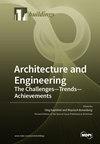利用实例分割技术检测韩国公寓大楼中的组件
IF 3.1
3区 工程技术
Q2 CONSTRUCTION & BUILDING TECHNOLOGY
引用次数: 0
摘要
自 2000 年代以来,随着人们对提高韩国公寓生活质量的要求越来越高,韩国开始开发具有多样化室外空间的公寓。分析这些建筑群需要详细的布局数据,而这些数据很难从施工图纸中获取。本研究利用 Roboflow 地图应用程序接口来收集基于公寓楼地址的数据,从而解决了这一问题。该数据集分为七个类别,训练了一个 YOLOv8s-seg 细分模型,并通过每个类别的精确度、召回率和 mAP 值对该模型进行了评估。虽然车辆道路和福利设施带来了挑战,但检测性能普遍较高。建筑群的划分、主要建筑布局的分析以及基于时期、家庭数量和区域形状的分类都是潜在的应用领域。这项研究的重要意义在于通过地图获得了布局图纸数据集,由于难以获得公寓建筑群的实际竣工蓝图,这是一项具有挑战性的壮举。然而,绘制的布局图与实际蓝图之间存在差异,造成了一定的误差;这是本研究的局限性。尽管如此,从本研究中得出的公寓大楼布局分析模型有望对未来的各种研究项目有所帮助。我们预计,进一步的研究将能够根据改进后的分析模型开展公寓楼群的建筑规划研究。本文章由计算机程序翻译,如有差异,请以英文原文为准。
Detection of Components in Korean Apartment Complexes Using Instance Segmentation
Since the 2000s, the demand for enhancing the quality of life of Korean apartment complexes has led to the development of units with diverse outdoor spaces. Analyzing these complexes requires detailed layout data, which are challenging to obtain from construction drawings. This study addresses this issue using the Roboflow map API to collect data based on apartment complex addresses. The dataset, categorized into seven classes, trained a YOLOv8s-seg segmentation model, which was evaluated by precision, recall, and mAP values per class. Detection performance was generally high, although vehicle roads and welfare facilities posed challenges. Segmenting complexes, analyzing main building layouts, and classifying based on period, household count, and regional shape are potential applications. This study is significant because it secured a dataset of layout drawings through maps, a challenging feat given the difficulty in obtaining actual completion blueprints of apartment complexes. However, discrepancies existed between the mapped layouts and the actual blueprints, which caused certain errors; this represents a limitation of the study. Nevertheless, the apartment complex layout analysis model derived from this study is expected to be useful for various future research projects. We anticipate that further studies will be able to conduct architectural planning research on apartment complexes based on an improved analysis model.
求助全文
通过发布文献求助,成功后即可免费获取论文全文。
去求助
来源期刊

Buildings
Multiple-
CiteScore
3.40
自引率
26.30%
发文量
1883
审稿时长
11 weeks
期刊介绍:
BUILDINGS content is primarily staff-written and submitted information is evaluated by the editors for its value to the audience. Such information may be used in articles with appropriate attribution to the source. The editorial staff considers information on the following topics: -Issues directed at building owners and facility managers in North America -Issues relevant to existing buildings, including retrofits, maintenance and modernization -Solution-based content, such as tips and tricks -New construction but only with an eye to issues involving maintenance and operation We generally do not review the following topics because these are not relevant to our readers: -Information on the residential market with the exception of multifamily buildings -International news unrelated to the North American market -Real estate market updates or construction updates
 求助内容:
求助内容: 应助结果提醒方式:
应助结果提醒方式:


